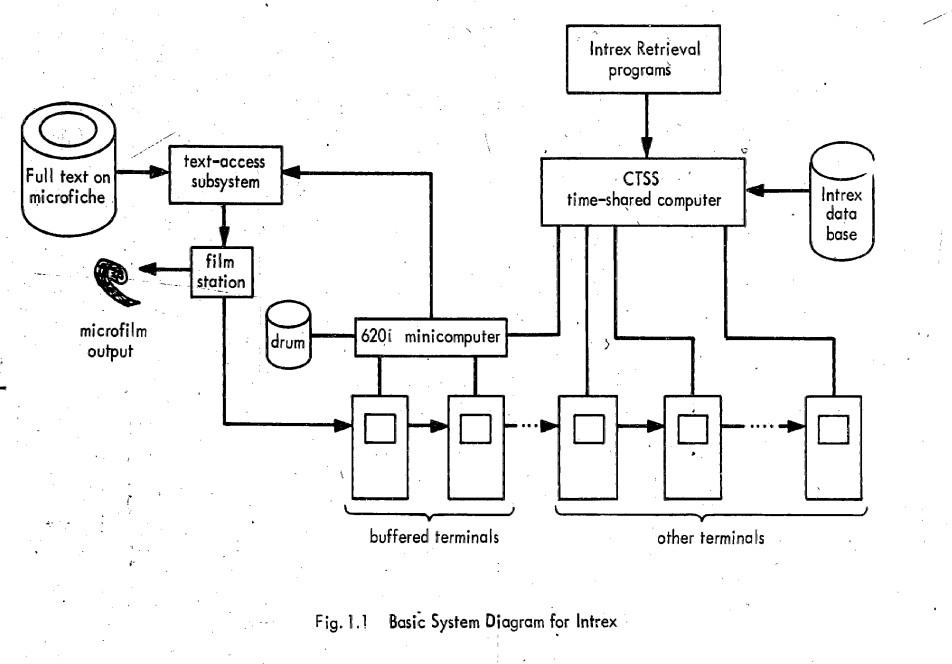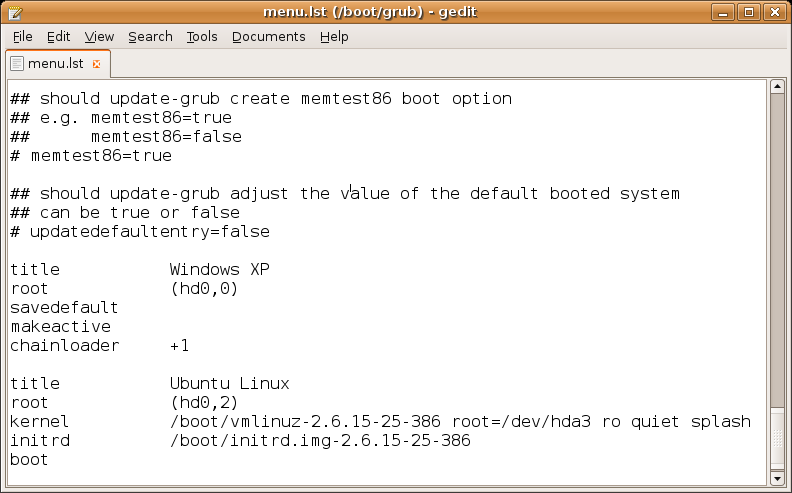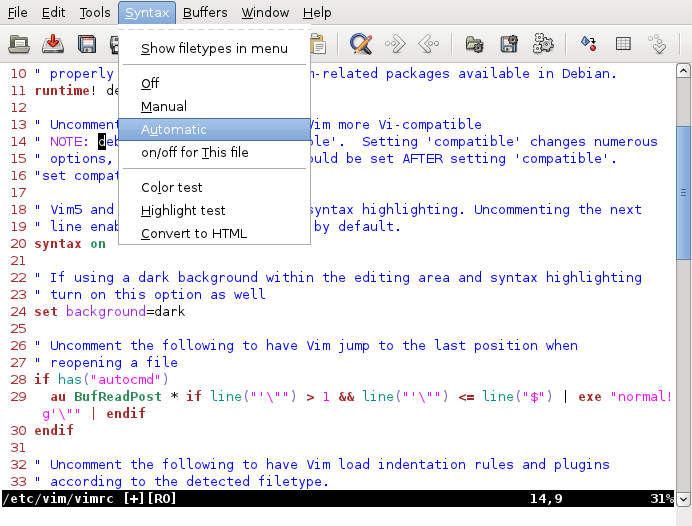|
RUNCOM
RUNCOM is a CTSS macro command (script) processor. History Louis Pouzin created RUNCOM for CTSS circa 1963. He wrote a paper in 1965 describing a design for the Multics shell which includes a brief description of RUNCOM followed by a second paper he wrote five days later describing a design for RUNCOM that added commands for control flow, conditional branching and looping. In the context of Unix-like systems, the term ''rc'' stands for the phrase "run commands". It is used for any file that contains startup information for a command. From Brian Kernighan and Dennis Ritchie: Tom Van Vleck, a Multics engineer, has also reminisced about the extension rc: "The idea of having the command processing shell be an ordinary slave program came from the Multics design, and a predecessor program on CTSS by Louis Pouzin called RUNCOM, the source of the '.rc' suffix on some Unix configuration files." This is also the origin of the name of the Plan 9 from Bell Labs shell by Tom Duff, the ... [...More Info...] [...Related Items...] OR: [Wikipedia] [Google] [Baidu] |
Louis Pouzin
Louis Pouzin (April 20, 1931 in Chantenay-Saint-Imbert, Nièvre, France) is a French computer scientist. He designed an early packet communications network, CYCLADES. This network was the first actual implementation of the pure datagram model, initially conceived and described by Donald Davies, subsequently named by Halvor Bothner-By, and seen by Louis Pouzin as his personal invention. His work, and that of his colleagues Hubert Zimmerman and Gérard Le Lann, were acknowledged by Vinton Cerf as substantial contributions to the design of TCP/IP, the protocol suite used by the Internet. Biography He studied at the École Polytechnique from 1950 to 1952. Having participated in the design of the Compatible Time-Sharing System (CTSS) at MIT, Pouzin wrote a program for it called RUNCOM around 1963–64. RUNCOM permitted the execution of commands contained within a folder and can be considered the ancestor of the command-line interface and shell scripts. Pouzin was the one who coin ... [...More Info...] [...Related Items...] OR: [Wikipedia] [Google] [Baidu] |
Compatible Time Sharing System
The Compatible Time-Sharing System (CTSS) was the first general purpose time-sharing operating system. Compatible Time Sharing referred to time sharing which was compatible with batch processing; it could offer both time sharing and batch processing concurrently. CTSS was developed at the MIT Computation Center ("Comp Center"). CTSS was first demonstrated on MIT's modified IBM 709 in November 1961. The hardware was replaced with a modified IBM 7090 in 1962 and later a modified IBM 7094 called the "blue machine" to distinguish it from the Project MAC CTSS IBM 7094. Routine service to MIT Comp Center users began in the summer of 1963 and was operated there until 1968. A second deployment of CTSS on a separate IBM 7094 that was received in October 1963 (the "red machine") was used early on in Project MAC until 1969 when the red machine was moved to the Information Processing Center and operated until July 20, 1973. CTSS ran on only those two machines however there were remote CTSS ... [...More Info...] [...Related Items...] OR: [Wikipedia] [Google] [Baidu] |
Tom Duff
Tom or TOM may refer to: * Tom (given name), a diminutive of Thomas or Tomás or an independent Aramaic given name (and a list of people with the name) Characters * Tom Anderson, a character in ''Beavis and Butt-Head'' * Tom Beck, a character in the 1998 American science-fiction disaster movie '' Deep Impact'' * Tom Buchanan, the main antagonist from the 1925 novel ''The Great Gatsby'' * Tom Cat, a character from the ''Tom and Jerry'' cartoons * Tom Lucitor, a character from the American animated series ''Star vs. the Forces of Evil'' * Tom Natsworthy, from the science fantasy novel ''Mortal Engines'' * Tom Nook, a character in ''Animal Crossing'' video game series * Tom Servo, a robot character from the ''Mystery Science Theater 3000'' television series * Tom Sloane, a non-adult character from the animated sitcom ''Daria'' * Talking Tom, the protagonist from the ''Talking Tom & Friends'' franchise * Tom, a character from the '' Deltora Quest'' books by Emily Rodda * Tom, a cha ... [...More Info...] [...Related Items...] OR: [Wikipedia] [Google] [Baidu] |
Configuration File
In computing, configuration files (commonly known simply as config files) are computer file, files used to configure the Parameter (computer programming), parameters and Initialization (programming), initial settings for some computer programs. They are used for user application software, applications, Server (computing), server processes and operating system settings. Some applications provide tools to create, modify, and verify the syntax of their configuration files; these sometimes have graphical interfaces. For other programs, system administrators may be expected to create and modify files by hand using a text editor, which is possible because many are human-editable plain text files. For server processes and operating-system settings, there is often no standard tool, but operating systems may provide their own graphical interfaces such as YaST or debconf. Some computer programs only read their configuration files at Booting, startup. Others periodically check the configur ... [...More Info...] [...Related Items...] OR: [Wikipedia] [Google] [Baidu] |
BCD (character Encoding)
BCD (''binary-coded decimal''), also called alphanumeric BCD, alphameric BCD, BCD Interchange Code, or BCDIC, is a family of representations of numerals, uppercase Latin letters, and some special and control characters as six-bit character codes. Unlike later encodings such as ASCII, BCD codes were not standardized. Different computer manufacturers, and even different product lines from the same manufacturer, often had their own variants, and sometimes included unique characters. Other six-bit encodings with completely different mappings, such as some FIELDATA variants or Transcode, are sometimes incorrectly termed BCD. Many variants of BCD encode the characters '0' through '9' as the corresponding binary values. History Technically, '' binary-coded decimal'' describes the encoding of decimal numbers where each decimal digit is represented by a fixed number of bits, usually four. With the introduction of the ''IBM card'' in 1928, IBM created a code capable of representing a ... [...More Info...] [...Related Items...] OR: [Wikipedia] [Google] [Baidu] |
Eric S
The given name Eric, Erich, Erikk, Erik, Erick, or Eirik is derived from the Old Norse name ''Eiríkr'' (or ''Eríkr'' in Old East Norse due to monophthongization). The first element, ''ei-'' may be derived from the older Proto-Norse language, Proto-Norse ''*wikt:Reconstruction:Proto-Germanic/ainaz, aina(z)'', meaning "one, alone, unique", ''as in the form'' ''Æ∆inrikr'' explicitly, but it could also be from ''*wikt:Reconstruction:Proto-Germanic/aiwaz, aiwa(z)'' "everlasting, eternity", as in the Gothic form ''Euric''. The second element ''-wikt:ríkr, ríkr'' stems either from Proto-Germanic language, Proto-Germanic ''*wikt:Reconstruction:Proto-Germanic/rīks, ríks'' "king, ruler" (cf. Gothic ''wikt:𐍂𐌴𐌹𐌺𐍃, reiks'') or the therefrom derived ''*wikt:Reconstruction:Proto-Germanic/rīkijaz, ríkijaz'' "kingly, powerful, rich, prince"; from the common Proto-Indo-European language, Proto-Indo-European root *wikt:Reconstruction:Proto-Indo-European/h₃rḗǵs, h� ... [...More Info...] [...Related Items...] OR: [Wikipedia] [Google] [Baidu] |
The Art Of Unix Programming
''The Art of Unix Programming'' by Eric S. Raymond is a book about the history and culture of Unix programming from its earliest days in 1969 to 2003 when it was published, covering both genetic derivations such as BSD and conceptual ones such as Linux. The author utilizes a comparative approach to explaining Unix by contrasting it to other operating systems including desktop-oriented ones such as Microsoft Windows and the classic Mac OS to ones with research roots such as EROS and Plan 9 from Bell Labs. The book was published by Addison-Wesley, September 17, 2003, and is also available online, under a Creative Commons license with additional clauses. Contributors The book contains many contributions, quotations and comments from UNIX gurus past and present. These include: *Ken Arnold (author of curses and co-author of '' Rogue'') *Steve Bellovin *Stuart Feldman *Jim Gettys *Stephen C. Johnson *Brian Kernighan * David Korn *Mike Lesk *Doug McIlroy *Marshall Kirk McKusick *Keit ... [...More Info...] [...Related Items...] OR: [Wikipedia] [Google] [Baidu] |
Vim (text Editor)
Vim (; "Vim is pronounced as one word, like Jim, not vi-ai-em. It's written with a capital, since it's a name, again like Jim." a contraction of ''Vi IMproved'') is a free and open-source, program. It is an improved clone of 's vi. Vim's author, Bram Moolenaar, derived Vim from a port of the [...More Info...] [...Related Items...] OR: [Wikipedia] [Google] [Baidu] |
Rc Shell
R&C, RC, R/C, Rc, or rc may refer to: Science and technology Computing * rc, the default Command line interface in Version 10 Unix and Plan 9 from Bell Labs * .rc (for "run commands"), a filename extension for configuration files in UNIX-like environments * rc, a file extension and compiler for Microsoft Windows resource scripts * Reconfigurable computing * Release Candidate, a term used in software engineering * Return code, used to identify errors or other aspects of software behavior * ''RigidChips'', a rigid body simulator program * "Rivest's Cipher," a term used in cryptographic algorithms * RoundCube, a web-based IMAP e-mail client * RealityCapture, a photogrammetry software Electronics * RC circuit, resistance/capacitance circuit, a term used in electronics * Radio control, a technology found in remote control vehicles * Reflection coefficient of a circuit * Remote control, a technology found in home entertainment devices Other uses in science and technology * SJ Rc, ... [...More Info...] [...Related Items...] OR: [Wikipedia] [Google] [Baidu] |
Tom Van Vleck
Tom Van Vleck is an American computer software engineer. Life and work Van Vleck graduated from MIT in 1965 with a BS in Mathematics. He worked on CTSS at MIT, and co-authored its first email program with Noel Morris. In 1965, he joined Project MAC, the predecessor of the MIT Computer Science and Artificial Intelligence Laboratory.''A Marriage of Convenience: THE FOUNDING OF THE MIT ARTIFICIAL INTELLIGENCE LABORATORY'' Chiou, Stefanie; et al. (2001) He worked on the development of for more than 16 years at and at |
Plan 9 From Bell Labs
Plan 9 from Bell Labs is a distributed operating system which originated from the Computing Science Research Center (CSRC) at Bell Labs in the mid-1980s and built on UNIX concepts first developed there in the late 1960s. Since 2000, Plan 9 has been free and open-source. The final official release was in early 2015. Under Plan 9, UNIX's ''everything is a file'' metaphor is extended via a pervasive network-centric filesystem, and the cursor-addressed, terminal-based I/O at the heart of UNIX-like operating systems is replaced by a windowing system and graphical user interface without cursor addressing, although rc, the Plan 9 shell, is text-based. The name ''Plan 9 from Bell Labs'' is a reference to the Ed Wood 1957 cult science fiction Z-movie '' Plan 9 from Outer Space''. The system continues to be used and developed by operating system researchers and hobbyists. History Plan 9 from Bell Labs was originally developed, starting in the late 1980s, by members of the Computing ... [...More Info...] [...Related Items...] OR: [Wikipedia] [Google] [Baidu] |
Macro (computer Science)
In computer programming, a macro (short for "macro instruction"; ) is a rule or pattern that specifies how a certain input should be mapped to a replacement output. Applying a macro to an input is known as macro expansion. The input and output may be a sequence of lexical tokens or characters, or a syntax tree. Character macros are supported in software applications to make it easy to invoke common command sequences. Token and tree macros are supported in some programming languages to enable code reuse or to extend the language, sometimes for domain-specific languages. Macros are used to make a sequence of computing instructions available to the programmer as a single program statement, making the programming task less tedious and less error-prone. (Thus, they are called "macros" because a "big" block of code can be expanded from a "small" sequence of characters.) Macros often allow positional or keyword parameters that dictate what the conditional assembler program generates ... [...More Info...] [...Related Items...] OR: [Wikipedia] [Google] [Baidu] |




